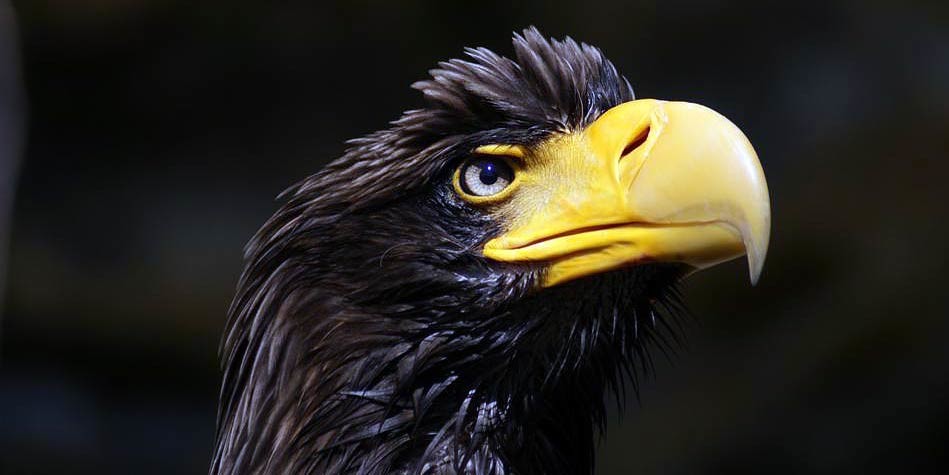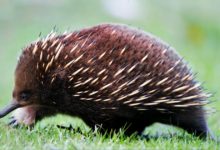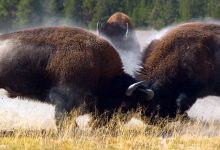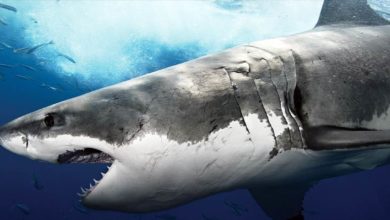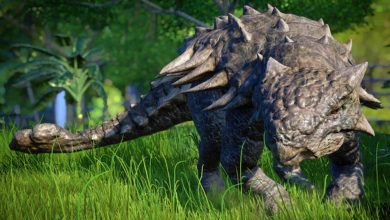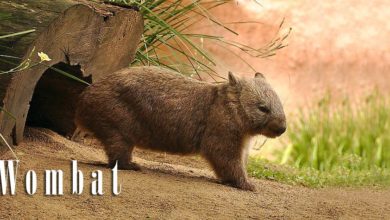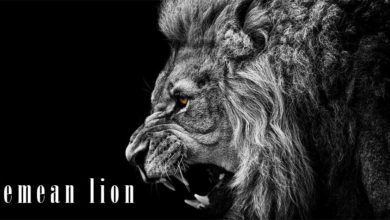Steller’s sea eagle (Heliaeetus pelagicus)
A huge beak, penetrating look and enormous size – the Steller’s sea eagle is a masterful and independent bird. Looking into its eyes, we can see the intelligence and strength, which many people would like to acquire… Get to know one of the largest birds of prey.
Classification
- Class: Aves
- Order: Accipitriformes
- Family: Accipitridae
- Genus: Haliaeetus
- Species: Steller’s sea eagle (Heliaeetus pelagicus)
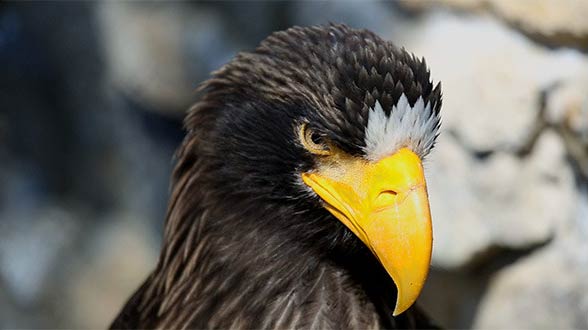
Areas of occurrence
It lives in the Kamchatka, in the Okhotsk Sea shoreline region, in the lower Amur river area and in the Northern areas of the Sakhalin Island and on Shantar Islands. Most birds spend winters in South Asia – on the Kuril Islands and on Japanese Hokkaido Island.
Rare migrations
It migrates less often than the white-tailed eagle (Haliaeetus albicilla), its range is small when compared to other birds of the Accipitridae family. Sometimes adolescent eagles were found in North America, on the Pribilof Islands and on Kodiak island, as well as in Beijing or Yakutsk, it also happens to fly all the way to Taiwan, but these are exceptional cases.

Nesting
It nests in two habitats: along marine coastlines and on the banks of large rivers, where usually old trees grow. It lives in the broad rocky areas or in high tree canopies, mostly in areas abundant with the Erman’s birch and riparian forest ecosystems consisting of larches, alders, willows and poplars.
“Some eagles, especially those who make their nests in the seaside, are not able to migrate”
In Kamchatka peninsula, eagles live in forests and river valleys, though they are not distributed consistently, most birds living there during winter are adult residents.
Migrating eagles fly to the swampy Japanese terrains and to the river banks during winter, yet they sometimes move to the inland mountain areas. On Hokkaido, the Steller’s sea eagles gather in the coastal areas and around lakes.
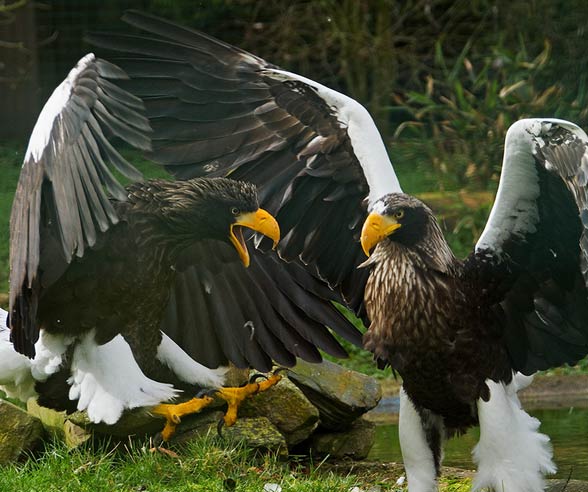
Characteristics
Size
Females usually weigh between 6.8 and 9 kg (14 – 19 lb), 7.6 kg (16 lb) on average, males may weigh from 4.9 to 6 kg (10 – 13 lb) and are slightly brighter-colored than the opposite sex.
In terms of average body mass it excels the Harpy eagle (Harpia harpyja) and the Philippine eagle (Pithecophaga jefferyi) by over 0.5 kg (1 lb).
The Steller’s sea eagle’s body length ranges from 85 to 105 cm (33.5 – 41.3 in), while its wingspan is between 1.95 – 2.5 m (77 – 98 in). It matches its close relative – the white-tailed eagle – with wingspan and their length, yet the latter is smaller in terms of length and body mass.
The tail reaches 32 – 39 cm (12.6 – 15.4 in) of length, while its tarsus is up to 9.5 – 10 cm (3.7 – 3.9 in) long. The beak is really impressive, as well as the whole skull; they are so massive they match even the largest vulture species (Gypinae).
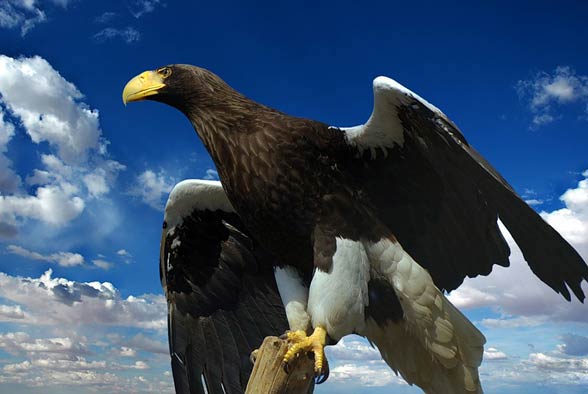
Feathers
It is covered with dark brown or black feathers on almost the whole body, except for the parts of wings in the shoulder area, legs and the lower body which are bright white. The tail is wedge-shaped and is longer than in the case of the white-tailed eagle.
The coloristic marks may play a certain role in the eagles’ social system, more precisely in intra-species relations beyond the hatching season, although this issue has not been thoroughly examined.
Adult eagles’ eyes, beak and feet are always yellow.
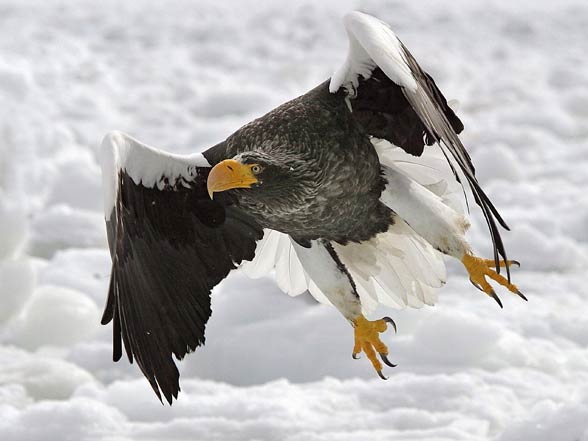
The chicks are immaculately white, yet the color evolves to a dirty white or deeper grey over time. Adolescent eagles have a more uniform coloration, dark brown is dominant with grey and brown accents on the head and neck, the tail is normally white with black specks closer to the torso. The iris is dark brown, the legs mostly white and the beak is brown.
Bird changes its coloration with age, beak and legs brighten up, a fully developed coloration can be observed after about 5 years.
This species’ vocalizations have not been fully investigated, we only know that it yells a barking-like sound: “ra-ra-ra-raura”, when showing aggression towards another eagle. Their ‘conversations’ most likely resemble the communication system of other eagles, yet they can be distinguished by their volume and lower pitch. In the breeding season, females make sounds similar to the loud and low seagulls’ calls.
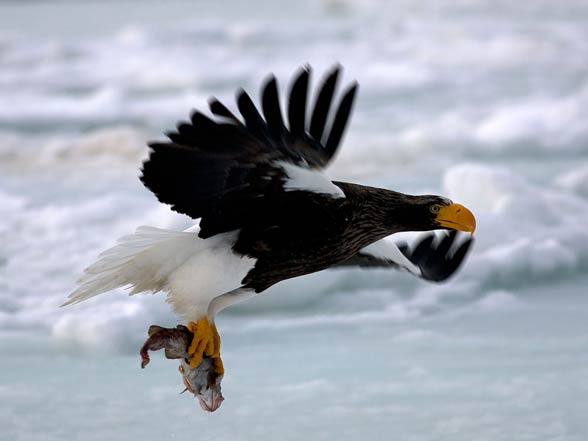
Diet and hunting strategy
Favorite food
Undoubtedly fish are the Steller’s sea eagle’s favorite meal, it particularly likes the salmonids: pink salmon, chum salmon and also trout. Its menu is sometimes complemented with graylings or sticklebacks. Population nesting in the seaside prefers large fish: Bering wolffish (Anarhichas orientalis), smooth lumpfish (Aptocyclus ventricosus), as well as the Myoxocephalus and Hemitripterus species.
Like other eagles, it hunts almost only in shallow waters. Large numbers of these birds, especially solitary, gather in one place during salmon’s spawning season (from August to September), with the realization of an ample hunt.
Sometimes large aggregations of Steller’s sea eagles of even 700 birds were observed in Kamchatka, yet normally the groups are less numerous.
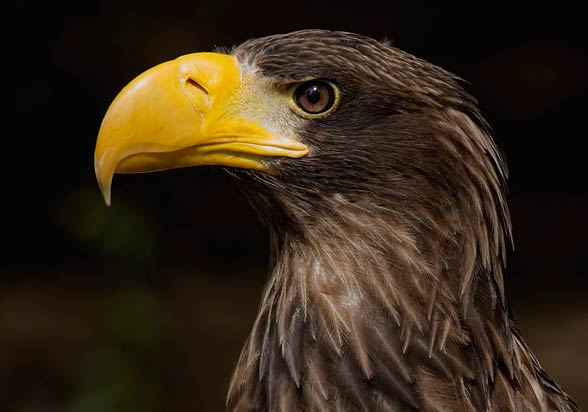
In summer, when feeding the young, it hunts for fish around 20-30 cm (8 – 12 in) long, it daily catches 2-3 such fish, while in autumn, when many salmons die after spawning, the rivers are flooded with dead fish and eagles eat them more often than live prey.
On Hokkaido the Pacific cod and Alaska pollock are the most commonly eaten species, being the most important source of food for birds spending winter in Japan.
About 80% of the eagles from the Amur river region are fish, but for birds inhabiting other areas river wetland and marine birds are equally important, including: swans, cranes, geese, seagulls and herons.
They also happen to hunt for small mammals (hare, tundra vole, Arctic fox), as well as crabs, clams, squids; they eagerly feed on the large carrion e.g. deer, seals, sea lions.
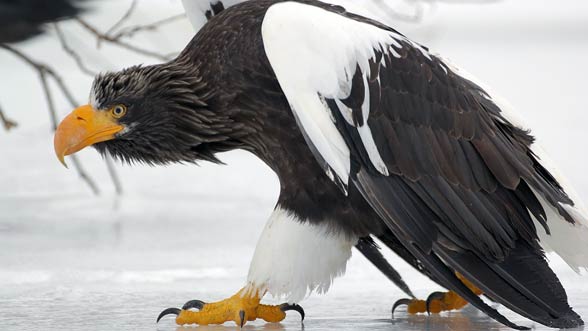
Hunting style
Most often it hunts from a branch, rock ledge, or other position 5 – 30 m (16 – 98 ft) above the water, from which it can see the surroundings well. When it spots a victim, it dives. Sometimes it hunts standing in shallow water, aground or on an ice floe – then it catches the flowing fish in its beak.
It is believed that the Steller’s sea eagle is more aggressive, stronger and more brisk during hunt than a white-tailed eagle.
When hunting in groups, frequently cases of kleptoparasitism take place – the eagle steals food from the other species.
Apart from the hatching season this eagle most likely lives in communities located near the hunting areas. During the season of largest salmon and trout abundance, the Steller’s sea eagle hunts alongside the golden eagle (Aquila chrysaetos) and the white-tailed eagle.

Breeding
It builds several nests made of twigs and sticks, over 150 cm (59 in) high, with a diameter of up to 250 cm (98 in), on rocks or trees about 15 – 20 m (50 – 65 ft) above ground. The particular nests are built around 900 m (2950 ft) from each other, yet there is a documented case of an eagle building nest every 100 m (330 ft).
Mating usually takes place between February and March, probably its only element is the gliding flight over the hatching area. The pair copulates inside the nest, eggs are laid in April or May. One hatch should consist of 1 to 3 eggs (2 on average), however, in most cases adolescence is reached by only one nestling.
After the incubation lasting 39 – 45 days, clumsy nestlings, covered with white fluff, are hatched. First feathers appear already around August or early September, yet an adult coloration is not reached until 4 – 5 years of age.
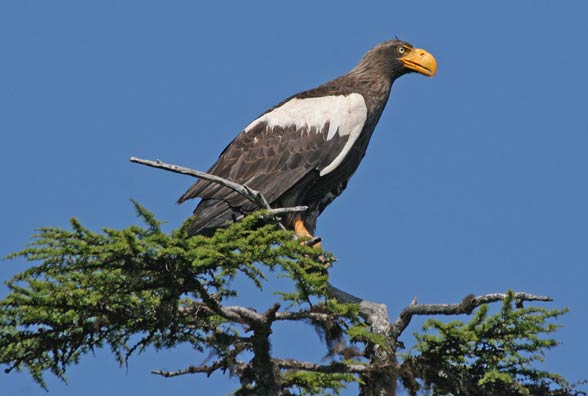
Eggs and small nestlings often become a tasty meal for arboreal mammals e.g. sables or ermines and birds (especially corvids), though an attempt on the eagle offspring’s life may end fatally for the attacker because of parental protection.
Even though chicks face many predatory perils, as adult eagles they will not have any natural enemies.
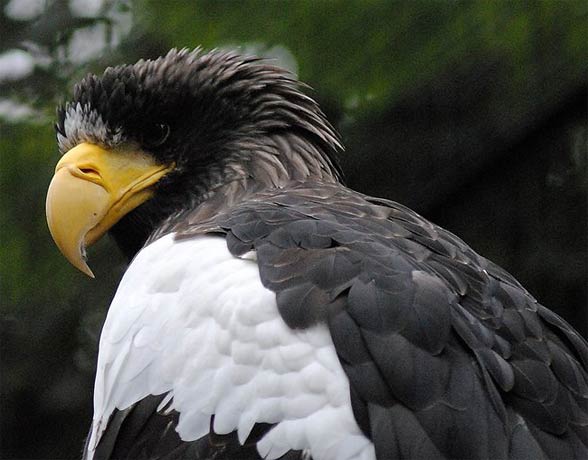
Detailed characteristic / size
Steller’s sea eagle (Haliaeetis pelagicus)
- Length: 85 – 105 cm (33.5 – 41.3 in)
- Wingspan: 195 – 250 cm (77 – 98 in)
- Wing chord: 57 – 68 cm (22 – 27 in)
- Tail length: 32 – 39 cm (12.6 – 15.4 in)
- Tarsus length: 5 – 10 cm (2 – 3.9 in)
- Mass:
- males: 4.9 to 6 kg (10 – 13 lb)
- females: 6.8 – 9 kg (14 – 19 lb), 7.6 kg (16 lb) on average
Steller’s sea eagles show distinct sexual dimorphism – females are substantially larger than males.
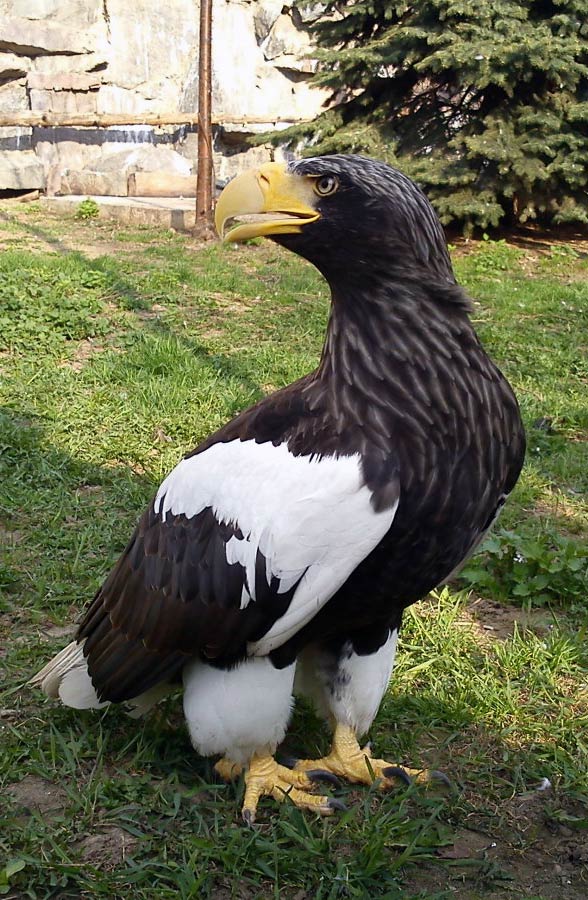
Steller’s sea eagle – interesting facts
- Steller’s sea eagle is the largest erne species (Haliaeetus genus) being as well one of the largest birds of prey in the world.
- Steller’s sea eagle has the second largest wingspan among all sea eagles.
- This animal’s large size may be related to the, so-called, Bergmann’s rule (warm-blooded animals of the same or similar species are larger in a colder climate).
- This species’ conservation status is ‘vulnerable’. These birds are protected by the law, being almost a national treasure in Japan.
- The threats are caused by habitat loss due to industrial pollution and overfishing, which clearly reduces the amount of food available.
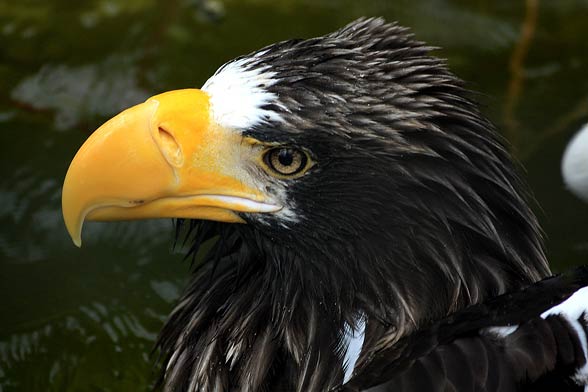
Steller’s sea eagle on video
A brief presentation of the Steller’s sea eagle below.
Recommended
- Animals records
- Largest eagles Top10
- Largest birds of prey
- Fastest animals – Top 10
- Fastest birds – Top 10
- Most venomous snakes – Top 10
- Largest sharks Top 10
- Heaviest land animals
- Largest crocodiles Top 10
- Largest whales TOP 10
- Longest snakes Top 10
- Highest (Top) flying bird – Top 10
- Largest and heaviest birds
- Largest turtles TOP 10

